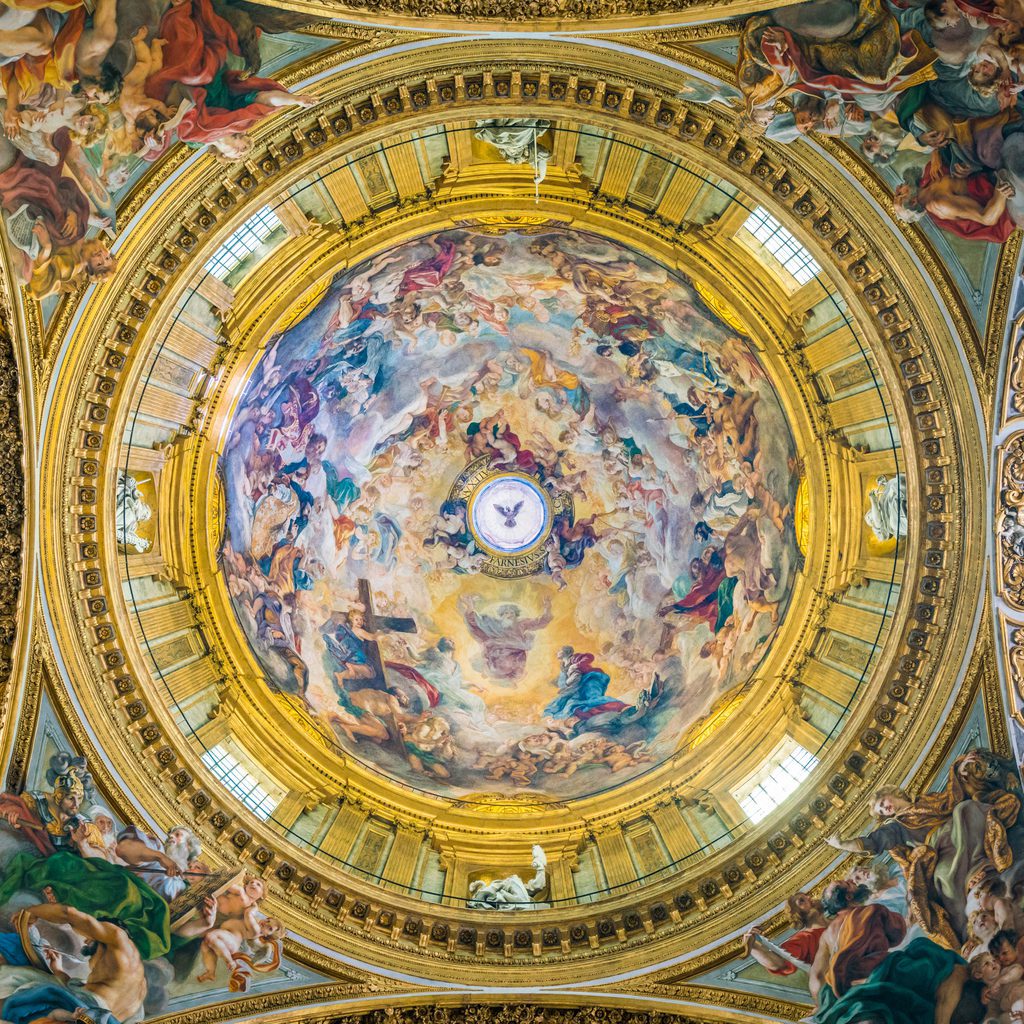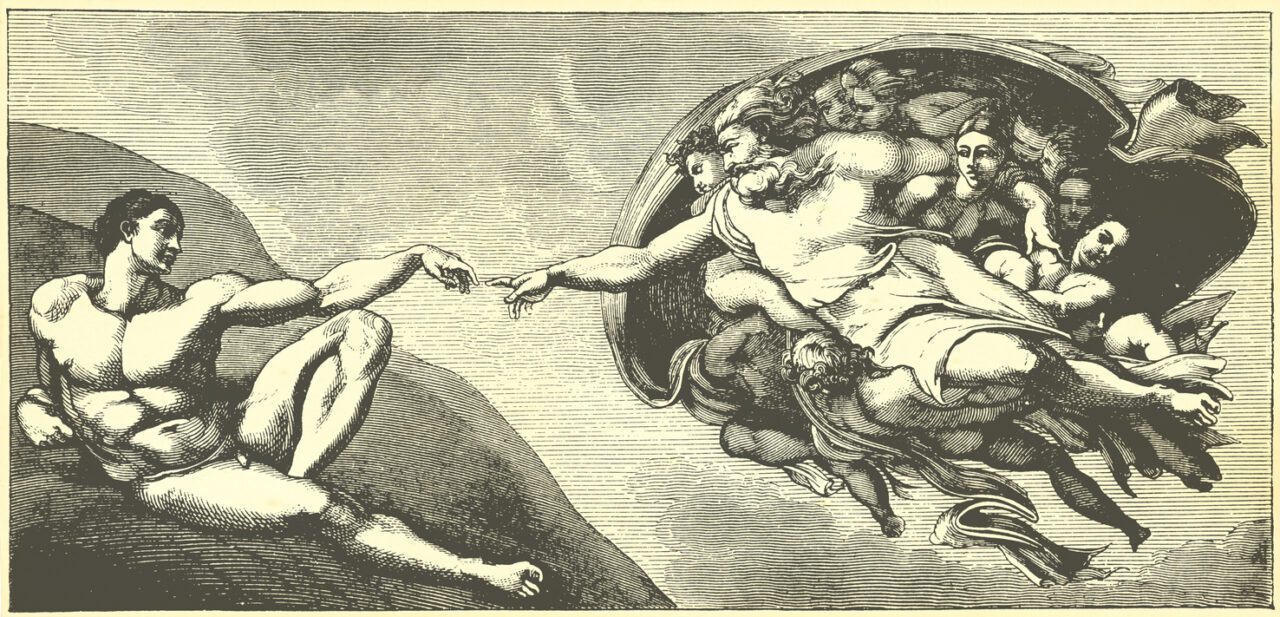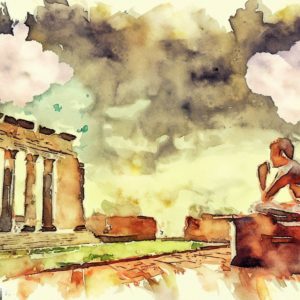0:00:23
Welcome back to the Logos of Experience and Truth Podcast where I continue to unlock the mysteries of the Beatific Vision.
Now, if you clicked on this podcast due to the title, did meditation in the west come from Eastern religions, I want to make sure to state at the onset, that I am not going to be giving a massive history here about meditation. Or to be more specific, I am not going to give what is generally called a theosophical position on the history of meditation and or religion in the west. Or the . . . I cannot remember the exact name for what the Theosophical writer’s give for the original religion. I cannot remember what that is. There is a specific term for it, but off the top of my head, I cannot remember exactly what that is. But their theory is that there was an original religion and that that broke apart and went to all the various cultures in Europe and Asia and that that is where the various religious ideas come from; why they have this sort of commonality within them all.
I am not going to be giving that. I am not going to be saying, you know, one or the other when it comes to that. All I am really talking about is my experience with meditation and how that relates to this type of question. Because I have at least looked into the history of that from my own point of view, from an American point of view, but it’s somewhat interesting and I’m only speaking on this because I’m wondering and I’m anticipating that there’s probably other Christians and or Catholics that might be listening to this, that have the same question as well. Because the way meditation is presented or at least how it was presented to me as a child, is that it comes from eastern religions. Meditation is an eastern religion thing. It is an eastern religion practice. And when I say eastern religion, I mean like Hinduism or Buddhism. And in general, the way that most people know and recognize meditation in this country, especially, is entirely based on that because of the Beatles. It was actually the Beatles who made eastern Hindu type religious meditation mainstream. And that’s actually when you get that burst of New Age type teachings because even though there were the gurus, there were Hindus here that were teaching their various forms of meditation it was once the American people took that and began to craft that into their own thing when you start to get the actual New Age stuff that arose from this initial mainstream showing of meditation and that the Beatles meditated.
So, in a way, yeah, meditation did come from the eastern religions here in America in the manner in which that we know and see it, but meditation itself is not solely an eastern religion thing.
0:03:40
Now as a Christian growing up . . . when I differentiate Christian or Catholicism in general, I am kind of referring more towards my youth . . . Christian. Even though I had family . . . as a Hispanic, most of my family was Catholic. I cannot say they were all practicing Catholic and then in my specific family, they had fallen away from the Church, and they were Protestants. So, I grew up going to an Episcopal church. And there was nothing about meditation. Prayer, yes, but not meditation. It was not until I had had my near-death experience and began to question this.
So, I have been somewhat negative in different things I have spoken of to the New Agers, but to their credit, to their benefit, their talking about meditation . . .
0:04:27
I mean, I probably wouldn’t have learned about meditation if I had not come across some of that New Age stuff. So, they definitely spread that practice out there. But as a Christian, as somebody who identified as a Christian and who was searching, seeking Christ, not knowing about the Christian history with meditation at that time frame, was quite an eye opener when I did come across it, when I did finally learn it. Because it is deep, its legs go way in the past. And I have already spoken about monasticism out in the desert or the desert fathers. Well, what else were they doing out there in a little cave? Meditating! I mean, that’s how far back meditation and especially contemplative prayer goes. So, I have explained that before, but in the context of this, I will explain it again.
0:05:18
The difference between meditation and contemplative prayer, especially if you are in the West, a Christian and or a Catholic or if you have come across the concept and the practice of Centering prayer which is somewhat Catholic, somewhat not. I think other groups have kind of taken it and used it as a form of bringing meditation into whatever their denomination is. But meditation in the Catholic monastic sense would be thinking about some prayer or saying or theological concept or something of that order and you are still pretty much in the same stance, right? You are still sitting, you are still . . . eyes closed, you are still praying, you could still be doing all the same things that we traditionally think of meditation. But you are thinking about these things. You are trying to grasp the knowledge of whatever it is you are trying to grasp . . . whatever concept you are trying to understand. Obviously, a scientist can meditate, for instance, right? If they are meditating on understanding some scientific principle, right? That is meditation. That is the Christian sense of meditation. But then the contemplative prayer is similar, different, and the goal.
0:06:40
If I give the physical expression of what contemplative prayer is, this would be Eucharistic Adoration in the Catholic Church. I do not know if they do that in Eastern Orthodox. I probably should know. I am sure they do. This is where the chapel is kept open, the host is in the . . . I always forget the name of that thing that they put . . . I think it is called a monstrance. I, I cannot remember what it is called. And you go into the little chapel, they have this sitting out there.
0:07:10
And since, obviously, as I mentioned before, and if you are not Catholic, we do believe that the presence of Christ is in the Eucharist and so it is called Eucharistic Adoration. You sit there and you are basically praying and adoring Christ in the Eucharist. It is prayer. It is meditation. All your focus is on this. Well, that is the external version. So, the internal version would be instead of mulling over like the concept of Eucharist or something like that, perhaps you’re just picturing the Eucharist in your mind. Perhaps you’re just repeating Eucharist in your mind or body and blood in your mind, and you are working to not think about the theological reason of this, but you are trying to sit and be with the Lord in your own mind, in your own self. So, the external form of this would be the Eucharistic Adoration, the internal form would just be contemplative prayer.
0:08:03
Now, what is interesting as well with this is that Jesus himself did teach the two different forms of prayer. It is just not ever fully emphasized, or at least for me, it was not emphasized, or I was not paying attention or however else you want to say it. But maybe if you . . . listening to this, look inside your own mind and think about it and are like, “No. The only thing I’m ever taught or what is emphasized is prayer and especially the Lord’s prayer.” Right? Because that is the prayer that Christ himself taught. His apostles asked, how do I pray? And he said, this is how you pray. But what is typically left out is the other part of how do I pray? How do you pray when he was asked? And not only that, but also how he demonstrated prayer. So, the other aspect of the actual text of what He says that you are supposed to do when you pray . . . you are supposed to go into your secret room, you are supposed to close the door and you are supposed to pray in secret to your Heavenly Father, who is there? That is contemplative prayer. That is Eucharistic Adoration prayer inside of your mind and heart. He teaches the internal way and then He also taught the external vocal, prayerful way with the Lord’s prayer. But the emphasis at least as it was for me, I do not know about you, but for me, the emphasis is always the Lord’s Prayer even when these scriptures are read. The emphasis is on the Lord’s prayer, not on this closing the door and praying in secret because that is essentially the form of prayer that Christ is teaching right there.
0:09:55
What in the east would be called meditation, but what in Christianity and Catholicism would be called contemplative prayer. That is contemplative prayer right there. And then the other example of this is also given in the Bible in the contrasting of Martha and Mary. Martha as the active sister who is serving, who is asking questions, who is a vocal, versus Mary who is sitting quietly and adoring the Lord. Meditation . . . contemplative prayer.
0:10:40
These forms of prayer, meditation, contemplative prayer, again, prayer you could just say is synonymous with meditation and then you can say it’s not synonymous with meditation because when I’m praying aloud, if I go to church and I’m praying aloud or if I’m just saying a prayer aloud, I don’t consider myself to be meditating. But then I can say the same prayer in my mind if I am quietly praying and contemplating the prayer itself and I would consider that to be meditation in the same sense of meditation in the east as well. And I think the name in the east that they give for the same type of contemplative prayer meditation, right, to differentiate it would be something like a single-pointed meditation or single-pointed guided meditation or something of that order where you’re focusing on a single image or a single word and you’re trying your best to focus on that and not focus on anything else and not focus on the fact that you’re trying to not focus on anything else because that would be focusing on something else that you’re trying not to focus on. And you can see how difficult it is actually to do contemplative prayer . . . it is actually to do single pointed meditation.
0:12:00
For those that think that meditation the way it is presented and seen and shown in America, in media is something that is not Christian or something that does not exist in Christianity or for those Christians that think that meditation isn’t Christian and that it’s something else, that it belongs to these other religions and they thus reject it, just as I discovered the vast ocean of Christian meditation and contemplative prayer, hopefully, I’ve been able to express that. I am trying to give these practical reasons for any of this, for anything that is discussed in this podcast. And obviously, if meditation is one of the primary vehicles for following the Narrow Path and for experiencing the mysteries, then obviously there is a why is this important episode soon to come for this.
0:13:03
But I did want to ground you the listener in this in case you are unaware, or you have never considered this or did not experience this in your upbringing the way I did because the only thing I knew about meditation was that it was like a Buddhist or a Hindu thing. I had never seen that in Christianity. It was just prayer in Christianity, the form of prayer at church and nothing else, but there is vastly more than that.
And I will leave you at that. Until next time.





